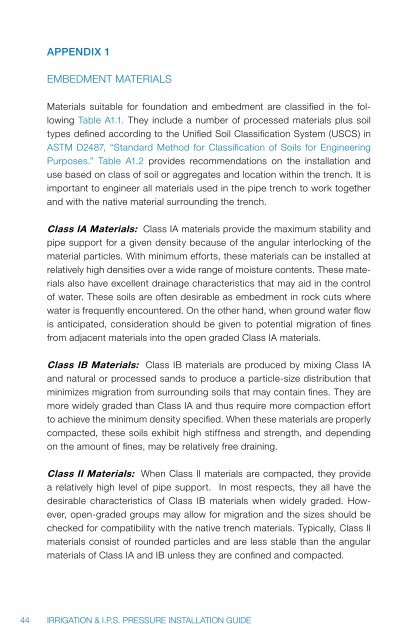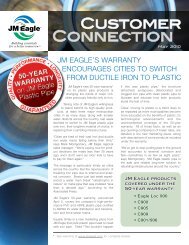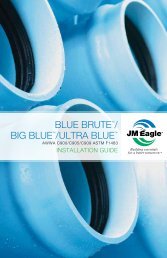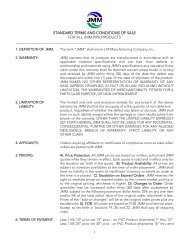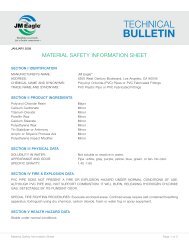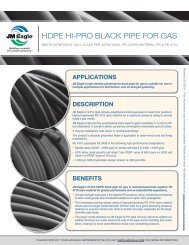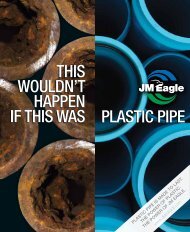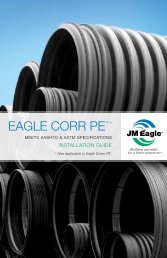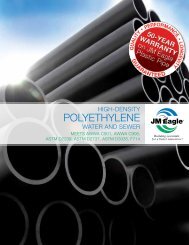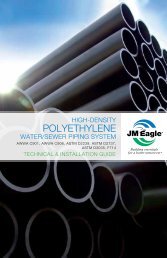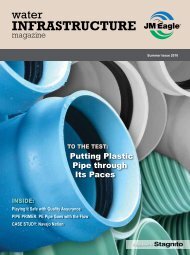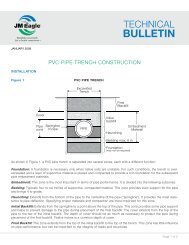I.P.S. Pressure/Irrigation (P.I.P) Installation Guide - JM Eagle
I.P.S. Pressure/Irrigation (P.I.P) Installation Guide - JM Eagle
I.P.S. Pressure/Irrigation (P.I.P) Installation Guide - JM Eagle
You also want an ePaper? Increase the reach of your titles
YUMPU automatically turns print PDFs into web optimized ePapers that Google loves.
Appendix 1<br />
Embedment Materials<br />
Materials suitable for foundation and embedment are classified in the following<br />
Table A1.1. They include a number of processed materials plus soil<br />
types defined according to the Unified Soil Classification System (USCS) in<br />
ASTM D2487, “Standard Method for Classification of Soils for Engineering<br />
Purposes.” Table A1.2 provides recommendations on the installation and<br />
use based on class of soil or aggregates and location within the trench. It is<br />
important to engineer all materials used in the pipe trench to work together<br />
and with the native material surrounding the trench.<br />
Class IA Materials: Class IA materials provide the maximum stability and<br />
pipe support for a given density because of the angular interlocking of the<br />
material particles. With minimum efforts, these materials can be installed at<br />
relatively high densities over a wide range of moisture contents. These materials<br />
also have excellent drainage characteristics that may aid in the control<br />
of water. These soils are often desirable as embedment in rock cuts where<br />
water is frequently encountered. On the other hand, when ground water flow<br />
is anticipated, consideration should be given to potential migration of fines<br />
from adjacent materials into the open graded Class IA materials.<br />
Class IB Materials: Class IB materials are produced by mixing Class IA<br />
and natural or processed sands to produce a particle-size distribution that<br />
minimizes migration from surrounding soils that may contain fines. They are<br />
more widely graded than Class IA and thus require more compaction effort<br />
to achieve the minimum density specified. When these materials are properly<br />
compacted, these soils exhibit high stiffness and strength, and depending<br />
on the amount of fines, may be relatively free draining.<br />
Class II Materials: When Class II materials are compacted, they provide<br />
a relatively high level of pipe support. In most respects, they all have the<br />
desirable characteristics of Class IB materials when widely graded. However,<br />
open-graded groups may allow for migration and the sizes should be<br />
checked for compatibility with the native trench materials. Typically, Class II<br />
materials consist of rounded particles and are less stable than the angular<br />
materials of Class IA and IB unless they are confined and compacted.<br />
44 IRRIGATION & I.P.S. PRESSURE INSTALLATION GUIDE


